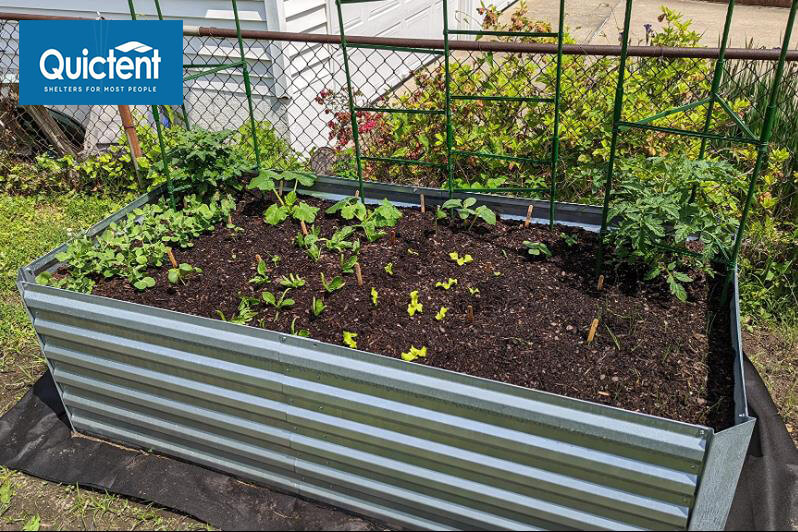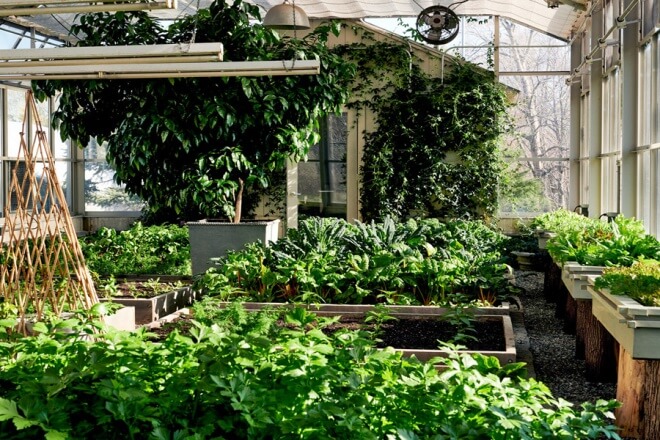Most gardeners choose to continue their year-round gardening program in the greenhouse tent in the fall and winter. The cold weather is not kind to most plants and they need warmer conditions. A greenhouse does not provide all the protection unless you set up heating inside.
However, heating facilities will incur a surprisingly high electricity bill. For many gardeners, it is a huge dilemma. Fortunately, there are still some other approaches you can take, and you can even get your plants through the fall and winter without using a bit of electricity. Here are six of the most practical ways to bring you the most help.
1. Compost in the greenhouse
Experienced gardeners understand the benefits of composting, which makes plants grow better. Not only that, but composting is an effective and cost-saving means of heating plants. A good compost pile can reach over 100 degrees Fahrenheit and last for some time. Compost can give off heat to make a greenhouse warm. You can set aside an area in your greenhouse for composting and place the compost in a garden bed made of wood to generate more heat. If you need to buy garden beds, Quictent Galvanized raised garden bed is worth the money.

About mixing soil and compost
A 1:1 mix ratio is ideal. The ratio of heat-producing material to growing medium should be 3:1, which will help the soil reach the perfect temperature for winter.
Using compost to keep your greenhouse warm in the winter is not a popular practice, but it is a very effective way. If you practice this gardening technique, you will find that composting lowers your winter gardening maintenance costs, and it is easy to do.
2. Use of insulating materials
Whether your greenhouse is a mini greenhouse, a large portable greenhouse, or a special high tunnel greenhouse, the basic principle of keeping them warm in winter is to keep the heat in the greenhouse. To achieve this, you need to reduce heat loss.
You can do this with supplementary heat sources and insulation
If the electricity bill is something that bothers you, put your focus on insulating your greenhouse.
Check your greenhouse vents, windows, and doors before you use insulation, and promptly seal cracks and replace broken parts. These measures are designed to block drafts.
You can then line your greenhouse with horticultural bubble wrap to keep plants warm, and larger bubble types are better to allow sunlight to pass through. Using a roll of insulation foil is also a great way to insulate the inside of your greenhouse.
3. Renewable energy for heating
Using renewable energy to keep your greenhouse warm in the winter is an environmentally friendly and effective way to do so. Many gardeners are not new to this approach, and it is common to install solar panels to generate and harness solar energy.
Solar panels can provide some of the energy for a greenhouse system. Heating the entire greenhouse brings a huge expense, you can try heating the soil underneath the plants, which is more effective and less expensive than heating the greenhouse.
If you still feel that these methods are “expensive”. You can also try a passive solar heated greenhouse.
4. Gas heated greenhouses
Relying on gas to keep your greenhouse warm in the winter is a common practice for many gardeners. Gas costs less than electricity to produce. However, gas heating is not suitable for novice gardeners because of the potential safety hazards that gas heaters can pose. Some experienced gardeners also agree that a high degree of caution is needed when using gas heaters and take extra care when it comes to safety
When you are shopping for a gas heater, you should try to look for products with thermostatic controls, most of these products are designed for outdoor and gardening purposes.
5. Hot water-heated greenhouses
Heating greenhouses with hot water was widely used as early as the nineteenth century. Now more gardeners are choosing to have hot water piping heating systems in their greenhouses or there are other more environmentally friendly ways of heating hot water.
Solar hot water panels. The use of solar panels to heat water is also known as recirculation heating. In addition to purchasing solar panels, you can also purchase solar water heaters and then fill the pipes with hot water to keep your greenhouse warm.
6. Poultry keeps the greenhouse warm
In addition to things like heating facilities and composting, you can also try a combination of greenhouse cultivation and poultry farming. Move your chickens, ducks, geese, and other poultry into a greenhouse and grow plants in other areas.
The benefits are:
1. The manure produced by poultry can be used as compost after being deposited for a while, bringing more benefits to keep plants warm.
2. The body heat of the poultry can raise the temperature inside the greenhouse and help the greenhouse plants stay warm.
Take action for your next gardening
Autumn has arrived, and now you know how to keep your greenhouse warm. Horticulture in autumn and winter is always more complicated than in spring and summer, but there are still plenty of good gardening tips for you. Start your next job and hope everything goes well in your backyard.

